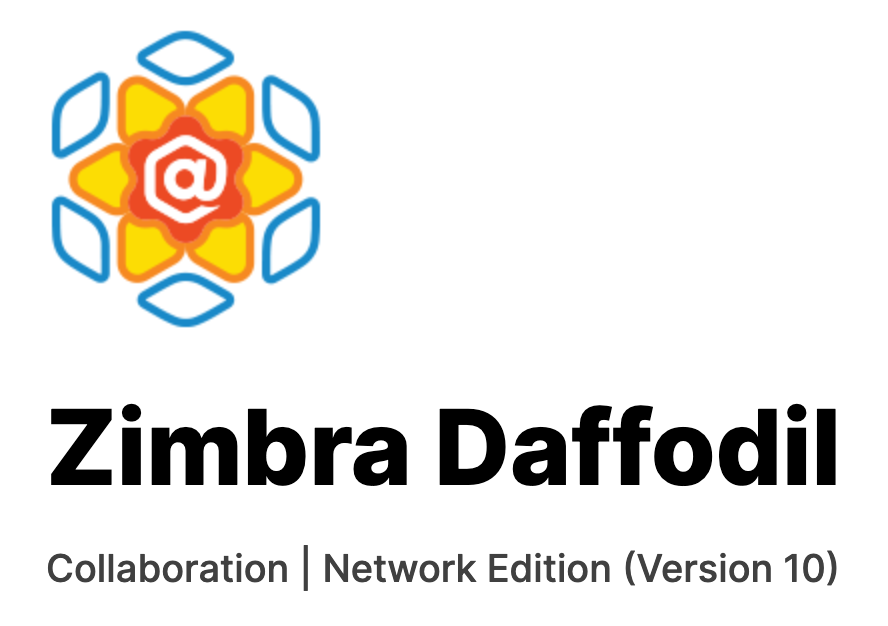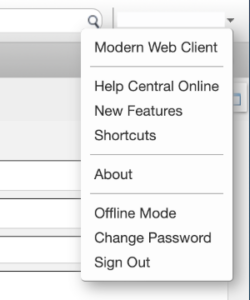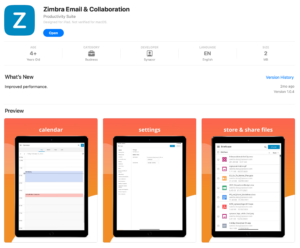
Zimbra 10 coming soon
Zimbra 10 will replace the current version in the next two weeks. End users will experience very little (if any) downtime. You will probably not notice that migration has occurred in terms of your access and email send/receive.
Following the migration, webmail users will see a post upgrade pop-up message which is normal.
Mobile and IMAP devices will resync. The length of time this takes will depend on the size of your data.
Zimbra 10 (also known as daffodil) introduces a number of new features. Let’s go through how those changes affect the Zimbra hosting platform.
NB Zimbra 10 features will become available once mailboxes are migrated to the new Zimbra 10 servers.
Zimbra Web Client
… Is now called the Classic Web Client, or Classic UI.
If you are logged in while your mailbox is being migrated, upon your return you will be greeted with an update notice — the same as in the past when a Zimbra Patch provided a minor version update. You should absolutely click the “Yes” button, and the browser will then take a second or two or three (depending on the speed of your computer and your Internet connection) to repaint your mailbox. After that, you can continue to use the “Classic” web client we have all been using since the launch of Zimbra.
Zimbra Modern Web Client
Once logged in to the “Classic UI”, when you click on your name in the upper right corner, you can now choose to use the Modern Web Client:


The Modern Web Client is very, very different from the Classic Web Client. In our experience, some people love the clean look of the Modern Web Client, and that it is organised more like Outlook. Others don’t like it all! You can select which Web Client you want in your Preferences tab in the Classic Web Client, and in Settings in the Modern Web Client.
Two things about the Modern Web Client…
- The first time you select to switch to the Modern Web Client, you may get a warning about navigating away from the page. That’s OK; you should click the “Leave” button:
- The first or second time you attempt to switch to the Modern Web Client, you may wind back up at the Classic web client. This is due to your browser caching based on our testing. If you switch back and forth between the two web clients, in our testing, the Modern Web Client paints correctly after the first or second retry. To switch back from the Modern Web Client to the Classic Web Client, just click the gear symbol in the upper-right corner of the Modern Web Client:
Offline Mode in Webmail
Zimbra Web Browser Offline Mode Returns! In Zimbra 10, both Web Clients support “Offline Mode”. This is great when, say, on a long airplane flight or in a marginal cell service area, and/or to avoid cellular Roaming data charges.
Zimbra Desktop
Zimbra Desktop lives… Long live Zimbra Desktop!
Long term Zimbra users may remember Zimbra Desktop which allows you to run Zimbra from your computer and use it offline. Development was discontinued for some years, but due to popular demand, it’s been redeveloped and is available for use now. Download from https://www.zimbra.com/zimbra-desktop-download/
Apple Zimbra App
On Apple devices, the Zimbra app can be found in the App Store
Outlook Connector
Zimbra continues to support the Zimbra Connector for Outlook (ZCO), but even with ZCO, Outlook does not support the full range of collaboration features within Zimbra.
HTML UI and Touch UI Removed
The very old HTML version of Webmail and the mobile webmail called Touch UI have been removed and is no longer accessible.
Zimbra Briefcase returns
Zimbra Drive has been removed and is replaced by Zimbra Briefcase which includes upgraded functionality.
This provides a single location where a user can manage, store, share, and edit documents. Documents contribute to the storage used on the account.
Office Features
Daffodil provides an updated set of documentation editors that works with Word, Spreadsheet, & Presentation documents.
- Supports editing and sharing of documents with multiple users.
- Supports Single file or folder share.
- Supports High fidelity Document preview.
- Supports many document formats.
- Supports Version control.
Users may need to reshare files if they were previously shared from Zimbra Drive.
Backup/Restore
The key differences in Zimbra 10 are around restores of mailboxes and deleted items. Historically restores were done by a snapshot of the entire mailbox being restored. Once on Zimbra 10, all item restores are done via the Zimbra Dumpster feature and it will not be possible for us to provide mailbox restores in the old way. We’ve increased the minimum Dumpster retention period from 7 to 14 days. Note that it is only possible to restore individual items from the Dumpster – so if you delete entire folders, the restore process will be tedious. Zimbra have committed to enhancing the Dumpster feature in future versions to make such scenarios easier to manage.
Mobile Sync and Device Management
The mobile sync feature supports the latest devices and has improved calendar synchronisation. It contains all of the security as the previous NG Mobile Sync version, but is now part of the core Zimbra code.
Key features include
- Support active-sync versions 16.1, 16.0, 14.1, 14.0 & 12.1.
- Support shared Folders and Calendars.
- Support for user-level configuration of ActiveSync protocol version
- Support for Autodiscover
- Allow/Block/Quarantine (ABQ) support
- Support for Mobile Device Security Policies:
- Remote Wipe
- Account Only Remote Wipe
- Device password policies
- S/MIME encryption policies
When a user’s mailbox is moved to a Zimbra 10 mailbox server, their sync token(s) are reset and their Mobile and/or IMAP clients will resync the entire mailbox.
Users will notice that their email “disappears” from their phone or IMAP client for a while, until it reappears. This may happen a few times, especially for users with large mailboxes and/or large number of folders in their mailbox.
We STRONGLY recommend ActiveSync users set their sync period to as short as possible (like, for two weeks), until their mailbox has been moved, and then they can extend the sync period. This will greatly speed up the resync of the mobile device.
Note that Apple mail clients have very short timeouts, and request the user’s entire mailbox folder tree to be refreshed before syncing any emails. If the user is on a marginal Internet connection, the user’s mailbox may appear to get populated, and then disappear. This typically indicates the folder refresh did not complete in the Apple-hard-coded amount of time. Best for the mobile device to be on a fast wireless connection to minimize disruption.
We will endeavour to move domains whose users have large mailboxes and/or large numbers of folders during off-hours, to minimize inconvenience to users and maximize such syncing to take place during those off-hours.



